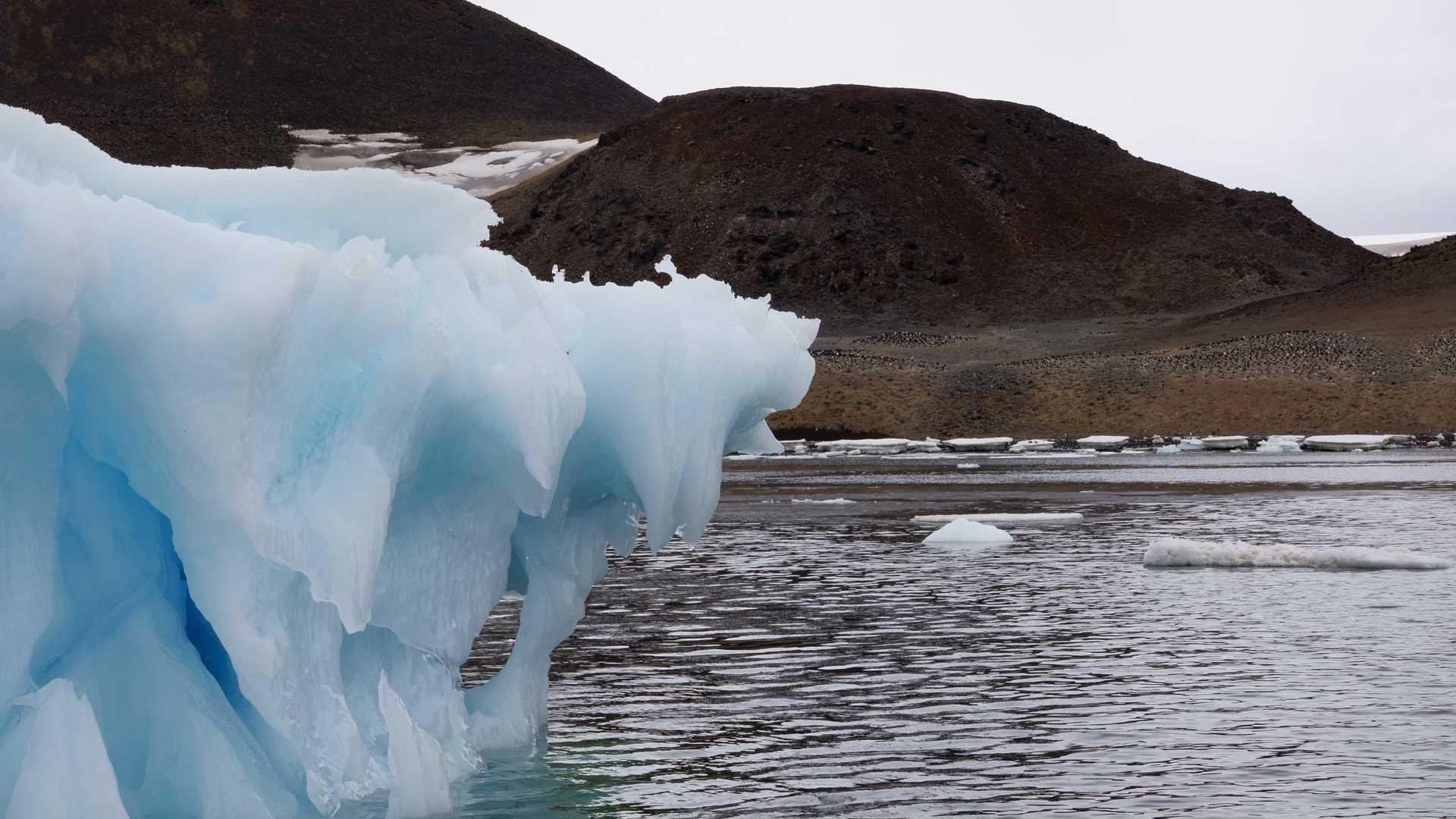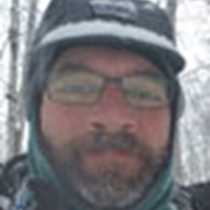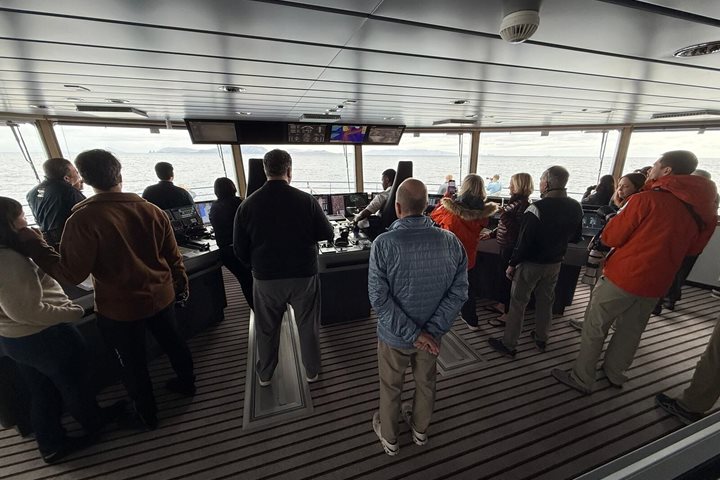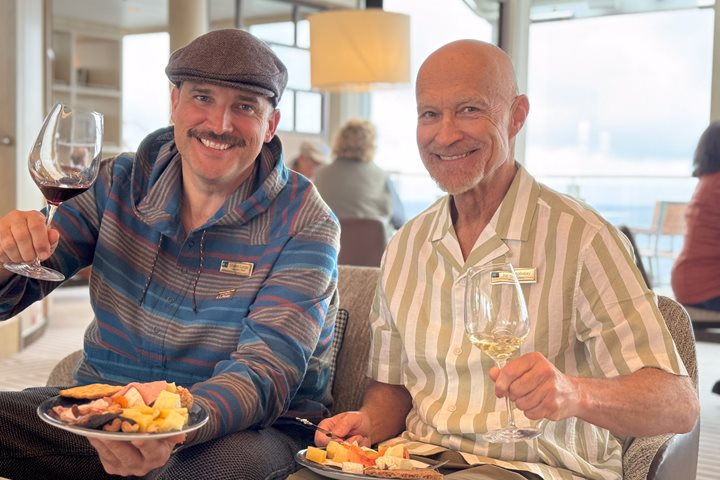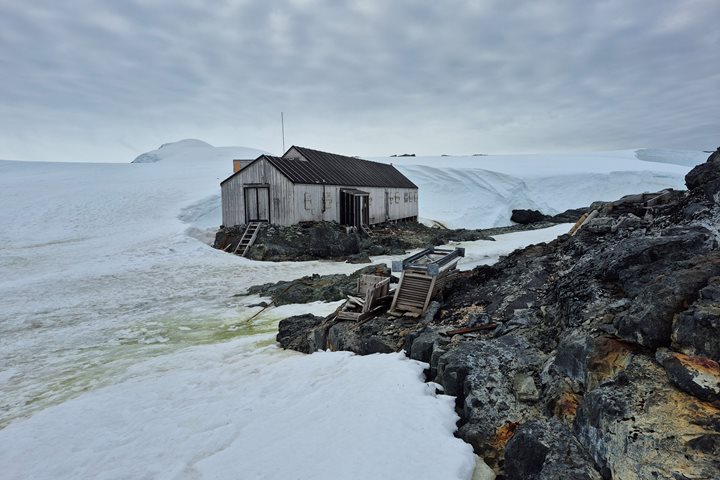Having covered nearly 200 nautical miles from Elephant Island overnight, we began our morning deep in the Weddell Sea heading towards Devil Island, where we would make our first landing in Antarctica and subsequent visit to a thriving Adélie penguin colony. This prominent volcanic island, with its twin columns of basalt, is the summer home for roughly 10,000 pairs of Adélie penguins. It is nested close to the larger Vega Island, which has equally impressive volcanic formations. As fate would have it, we arrived to find that many of the Adélie nests no longer contained two robust eggs being incubated by the dedicated adults, but rather helpless, lightly feathered fuzz balls that occasionally emerged from under their warm and cozy brood pouch, pleading for their first meals from the attending adult. What a thrill to bear witness to the hatching of the first of thousands of chicks.
After our visit to Devil Island, our plan was to explore this fabled body of water and seek out wildlife, take in the sights of sea and glacial ice, and hope for time and conditions suitable enough for an ice walk on the remaining fast ice in this area. There was also another mission that we hoped to fulfill today, with the participation of a thousand schoolchildren throughout the United States and Canada. Our undersea specialist, Alyssa Adler, has been working with National Geographic in many ways, and one of them is coordinating and taking part in a live broadcast from Antarctica. She brought a remote satellite broadcast unit to provide a direct and live interface to not only share some of Antarctica’s story, but in real time reach out to schoolchildren and provide a platform for them to engage us with questions in the field. The program, sponsored through National Geographic’s Explorer Classroom, was developed to better engage young people and bring their classrooms out into the field. With the planning and assistance from our ship’s crew and expedition team, a rarely visited and remote island deep in the heart of the Weddell Sea called Cockburn Island was chosen for the event. With the help of Divemaster Beau Price on the technical front, Alyssa and I, surrounded by nesting Adélie penguins, presented to 40 classrooms and answered many questions that ranged from penguin skeletal structures and plankton productivity to climate change.
While the three of us were on shore, the ship sailed away in search of fast ice—sea ice held fast to the adjacent shorelines—where we had the rare opportunity to “walk on water.” With the ship parked firmly in the ice, the guests disembarked by Zodiac and dropped off onto the meter-and-a-half thick sea ice over 340 meters of ocean water. All of this made for a remarkable day of exploration in the Weddell Sea, leaving us all to wonder just what tomorrow has in store for us.

